Violet "LE-Chateau Brion": characteristics and rules of care
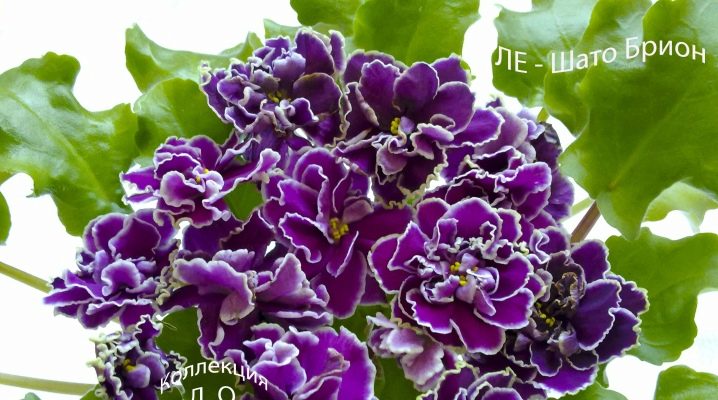
Many people grow a variety of flowers in their gardens and homes, including saintpaulias. Most often they are called violets. Variety "LE-Chateau Brion" is one of them.
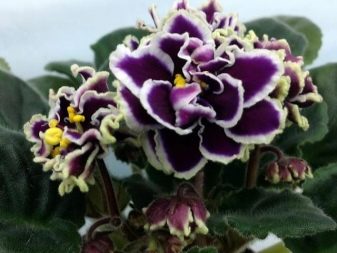
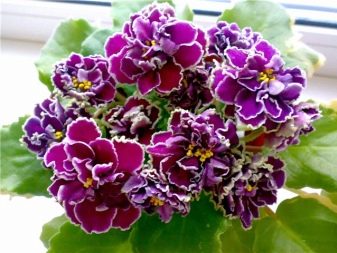
Features and description of the variety
Flowers of this variety form powerful large erect peduncles. The flowers have a rich wine shade. They are decorated with a thin white border along the edges. In certain cases, it is green. Violets have elongated leaf blades. They have a slightly wavy ovoid shape. The edges of the leaves are jagged.
Blossoming at "LE-Chateau Brion" is abundant nodding. The diameter of each flower can be more than 6 cm. The petals have a velvety surface. Flowers wither in this variety rather quickly: within 5-10 days. But at the same time, new buds are quickly formed in their place.
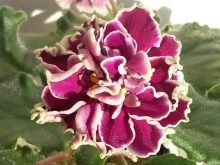
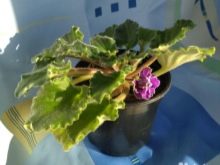

Thin peduncles of these violets are strongly elongated in the process of development.
All buds are slightly rounded. Plants propagate by cuttings. In this case, sports can appear. In this case, flowers of a different color, unusual for this variety, may form.

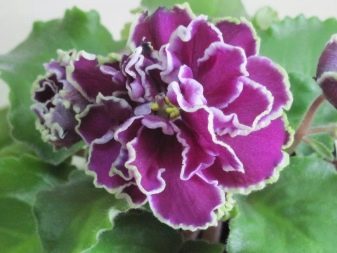
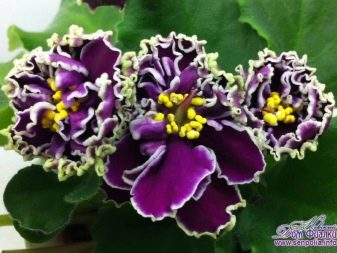
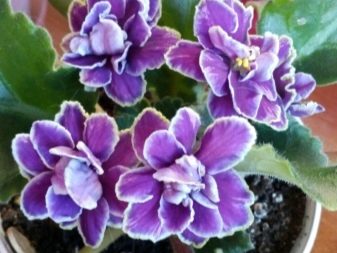
Correct care
Violets "LE-Château Brion" can grow both in the light and in shaded places. It should be remembered that plants require a lot of light, but not the sun. Violets do not like drying out, so they need regular watering. The most favorable temperature for flowers is 20-25 °. They also require various mineral and organic fertilizers.
Before planting violets, you should choose the right soil. The best option is acidic soil, which contains a small amount of sand, peat. You can buy soil at a flower shop.
Charcoal in the soil will be useful, but at the same time its amount should not be more than 10% of the total mass of the earth. Peat, which is also part of it, is best combined with vermiculite so that the moisture evaporates more slowly.
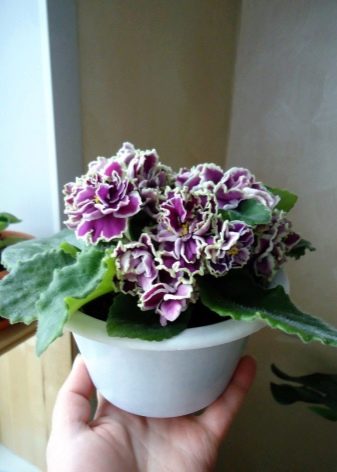
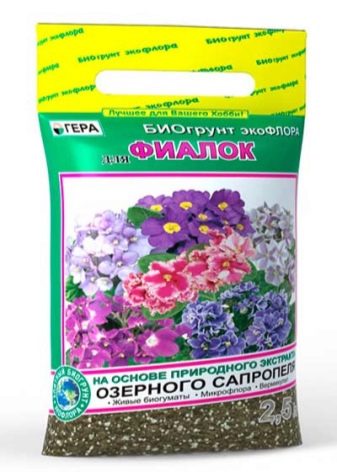
Before planting or transplanting violets, you should pay attention to the choice of a suitable container.
The pot must be at least 12 cm high and at least 10 cm in diameter... This size is enough for the roots to grow during the period of plant development. A drainage filler should be placed at the bottom of the pot, and its opening should be quite large.
In the warm season, the container can be located almost anywhere, but in winter it is better to rearrange it in the artificial lighting zone. Plant pots should not be left near powerful heating devices. To ensure the best conditions, it is recommended that the violets "LE-Château Brion" be regularly sprayed with streams of clean water.... But you need to distribute it so that it falls only on the leaf plates, but not on the buds.
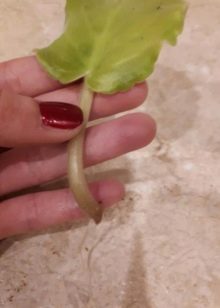


Pests
Often, violets are exposed to various parasites.
- They can be affected by mealybugs... As a rule, pests appear on the buds. To get rid of insects, you need to make an alcohol solution and prepare a piece of cotton wool. It is thoroughly moistened in a solution and the plant is cleaned of pests. If the mealybug reappears on the violets, then in this case they must be treated with special insecticides.
- Violets can be affected by powdery mildew... It occurs due to harmful fungi. At the same time, the flowers are covered with scattering of white dots.As a prophylaxis for the appearance of parasites, it is worth monitoring regular watering using special dressings, and treating it with fungicides in a timely manner.
- Sometimes violets are damaged by ticks... In the initial stages of pest infestation, it is almost impossible to see. Only after the appearance of new leaf plates can harmful insects be noticed, due to which the growth and development of flowers sharply slows down. In this case, the plants are treated with insecticides, but before that, diseased violets must be isolated from healthy ones.
- Violets can also be severely affected by the nematoda.... These worms quickly penetrate from the soil into the root system of the plant and completely suck out all the juices from it, which disrupts the supply of the plant with the necessary substances for growth and development. Violets will look as weak as possible, they will stop blooming and grow poorly. Later, small thickenings (parasite larvae) appear on them.
- Sometimes on the roots of plants you can see small thickenings in the form of bubbles (cysts of worms)... Most often, when infected with such a parasite, flowers are immediately disposed of. Moreover, together with them, they destroy the soil in which the diseased plant was located. The pot can simply be thoroughly disinfected.
- Violets can be affected by aphids... In this case, sticky secretions can be found on the plant. Wash off the pest with a simple soap solution. Sometimes tobacco dust is used for this.
- Thrips are considered the most dangerous harmful insects for indoor plants, because they spread as quickly as possible to other healthy flowers. You can get rid of parasites with the help of the drug "Aktara". During the procedure, it is necessary to process not only the plant itself, but also the soil in the pot.
- Sciaris can be seen on violets... These are small black flies. The parasites feed on juices. First of all, they damage the root system. In this case, the ground, along with the roots, is treated with special insecticides.
During this period, you should carefully monitor the watering of the plant: an excess amount of water in the soil will lead to the development of the disease.
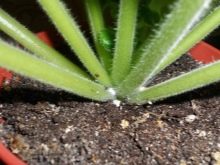

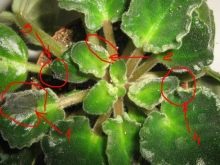
Diseases
Unfortunately, plants can get sick.
- Often violets suffer from the bronzing virus... It leads to the fact that the leaf plates lose their usual shape and color. Most often, the leaves are incapable of growth and development.
- Late blight can also affect violets.: brown spots appear on the leaves. As the disease progresses, almost the entire surface of the leaf blades becomes brown.
- Fusarium is a dangerous disease for indoor flowers... First, the roots are damaged: they become very soft and begin to rot. After that, the disease spreads to stems, petioles and leaf plates. With the development of the disease, most of the leaves of the lower layer wither quickly. The stems become watery over time, later they completely die off. If you are infected with fusarium, you should immediately remove the flower pot from the windowsill. It is better to destroy diseased violets along with the soil in which they were located. The pot must be carefully treated with copper sulfate. As a preventive measure against the disease, it is worth using "Fitosporin" for the treatment of violets. It is worth carrying out a preventive procedure on a monthly basis.
- Violets can be gray rot... It is caused by the fungus Botrytis. In this case, a grayish-brown fluffy coating appears on the plants. For a short period, the disease is able to cover the flower completely, which soon leads to its death. Most often, gray rot enters the ground along with plant residues. It can quickly infect healthy plants, so the affected flower must be isolated from others. Spores of the Botrytis fungus can be found in any soil, therefore, before planting, it must be treated with potassium permanganate and frozen well in the freezer.
- Violets may rust... It is formed due to rusty fungi. In case of illness, the leaves on both sides are covered with small tubercles of a yellow and brown hue. Fungi ripen if the room in which the plant is located is too humid and warm microclimate. They can also develop when there is a small amount of water on the leaves.
- During the heat, indoor plants suffer from bacteriosis.... At the same time, it is almost impossible to cure flowers. Signs of the disease are: softening of the leaf plates, a change in the color of the leaves (they become dark in color), the appearance of small brown spots on the stems, leaves and petioles. Affected flowers die. They can quickly infect other healthy indoor plants that are too close to diseased plants.
Most often, flowers get sick with bacteriosis if they are too dry.
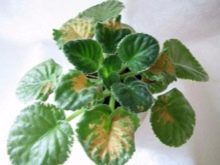
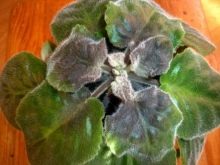

A detailed overview of the violet "LE-Chateau Brion" is presented in the video below.































The comment was sent successfully.